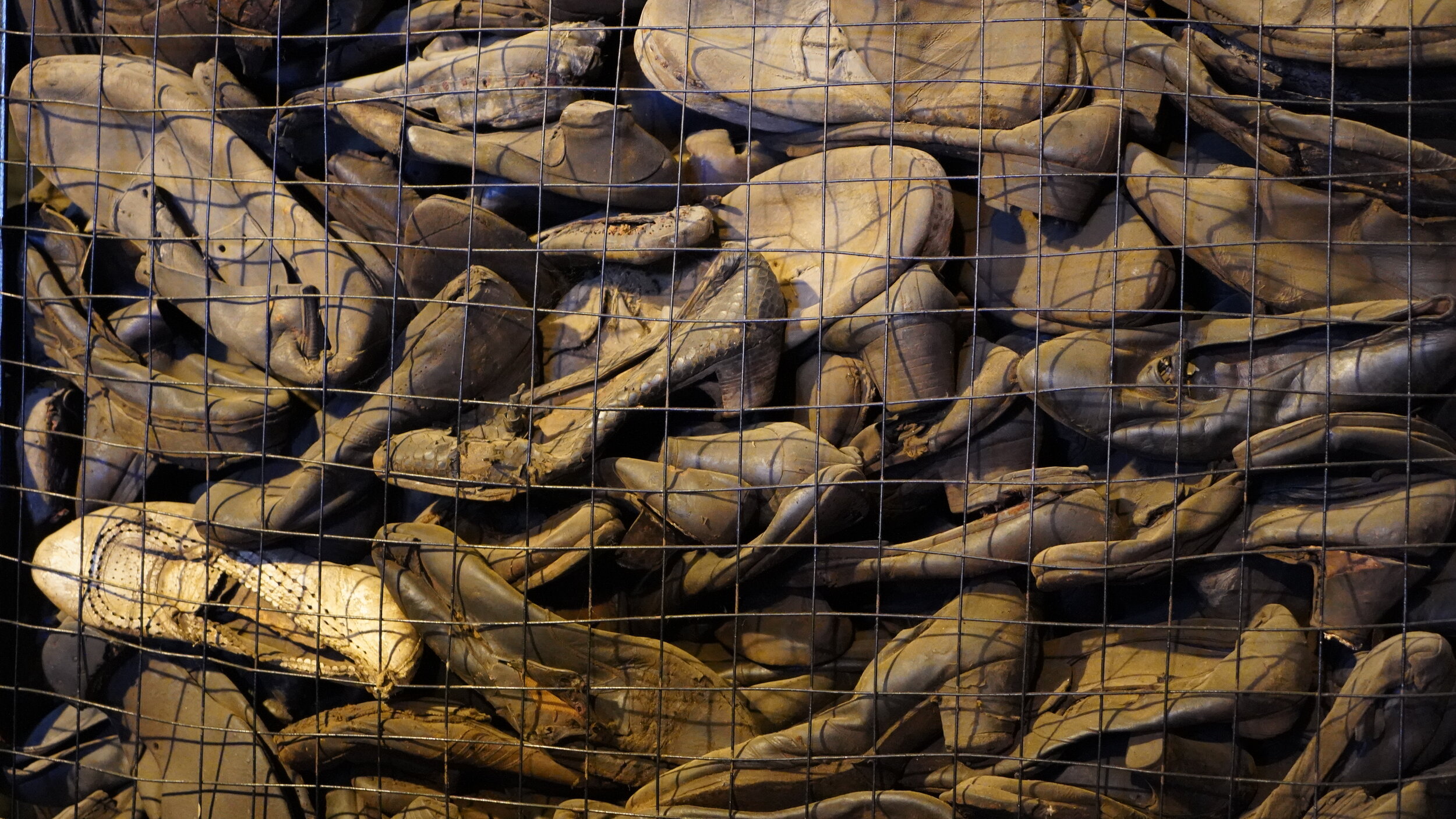Day 3 - Poland - Emma
After two intense days of learning and touring in Warsaw, day 3 filled everyone with a sense of apprehension. To start the day, we drove to the Chachmei Lublin Yeshiva where we met with Lehava and Masada. Together, led by Ben Potash, we prayed the Shacharit morning service and our prayer filled the Yeshiva with life. Our singing quickly turned to dancing and soon the whole room was alive with spirit, laughter and smiles.
After Shacharit, our tour guides took turns in informing us about the Yeshiva’s history. Established in 1930 by Rabbi Moshe Chaim Shapira around 400 scholars from all over the world came to study the power of Judaic texts and Talmud. Rabbi Shapira was also the creator of the Daf Yomi system, that one should study a page of Gemara each day in attempt to read the entire Gemara in 7 years.
At the beginning of the war, in 1939, the Yeshiva was sadly damaged and all its books were burnt and ruined, effectively ending the once lively school of learning. From there, the Jewish students were deported to Belzec, leaving the Yeshiva and the Lublin Jewish community as memories of the past.
On a high after praying, dancing, singing and learning, we left the Yeshiva and got onto the bus. However, our mood quickly sobered as we turned into the parking lot only metres away from Majdanek Concentration Camp.
An empty grey sky, cold sharp wind and flocks of black crows shrouded us as we walked down the gravel path to the front gate of Majdanek. There, a stone monument was placed to resemble the uncertainty of the prisoners upon their entrance into the camp. We passed a white concrete house, once the home of the camp commandant and his wife, Ilsa Koch. Ilsa was infamous in the camp as her husband used to bring her the skin of dead prisoners from which she would make lampshades, an unsettling ‘hobby’, as described by Mark, our guide.
We stopped before a building labeled ‘Bath and Disinfection’ where we learnt about the Red Rose Circle, the area where prisoners were beaten if they took too long to strip before entering the showers. Here, we also saw the old rusted, barbed wire fence which stood gravely, a silent witness to the horrors it had seen.
We walked into a barrack filled with shoes, 400,000 pairs, an incomprehensible amount. These shoes were confiscated from the Russian, Polish and Jewish prisoners of war upon their arrival at Majdanek. We were tasked with picking out one shoe, and thinking of the person who once wore that shoe, what their life was like, how old they were, what was their name. My eyes were immediately drawn to a black dress shoe, it’s faded sole and worn leather. How old was the man who wore it? My age? My brother’s age? My father’s age? This was a confronting experience that personalised the horrors of the camp from a concept to something tangible that all of us could connect to.
From there we walked in silence through the Polish barracks, learning that the camp was initially created for Russian political prisoners of war and how its placement, only 3 km away from the nearest town, was a strategy to control the behaviour of the locals.
The experience became even more heartbreaking as we walked up the stairs of the mausoleum. There, we were confronted with 7 tonnes of ash, the remains of the Majdanek prisoners. With no words to describe the feeling, Mark erupted into song with the hopeful words of Ani Maamin- I believe.
Along the copula of the mausoleum were the words, ‘Our fate is a warning to you’, from Fraciszek Fenikowski’s poem ‘Requiem’. This served as a reminder that we are the ones to carry the legacy of what happened during the Holocaust, that it is our job to ensure that Judaism lives on.
In silence, we all entered the Crematorium and walked through the rooms where our people were defiled and burnt to ash. Overcome with emotion, Ilan lead the group in singing Hatikvah, filling the room with the song of our people, our song of hope and promise.
That was our true resistance, the fact that we exited Majdanek with the flag of our nation proudly on our backs and the song of our people in our hearts.
Once on the bus, we drove to Krasnik, where we visited the ruins of an underground synagogue, a symbol of spiritual resistance from the 17th century. Together, we prayed the Maariv service and sang a myriad of Jewish songs. Our combined voices bringing life, feeling and spirituality back into the synagogue.
After experiencing the height of Jewish life and spirit through song from within the Lublin Yeshiva, juxtaposing drastically from the cold, morbid Majdanek and again with our singing in the ruins of the Krasnik shule, the reality of our lives as Jews in the 21st century became clearer. Our ability to be able to walk in through the gates of Majdanek, learn, experience and understand the horrors that occurred there and then, exit through the same gate is something that our ancestors and those who entered close to 80 years ago never had the chance to experience. After today, I understand my freedom and Judaism in a new light, one of survival, community, strength and empowerment. I doubt that feeling will ever be forgotten.



